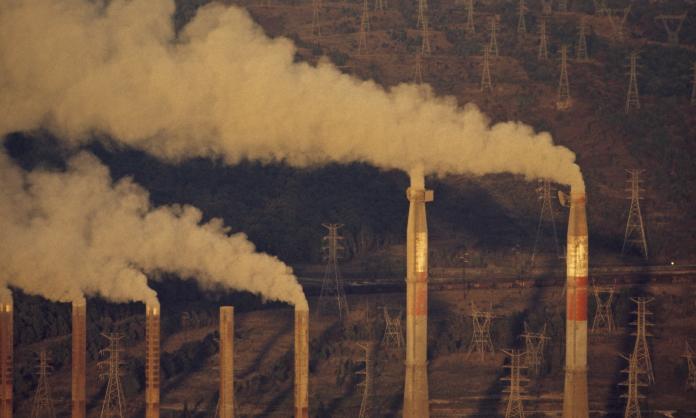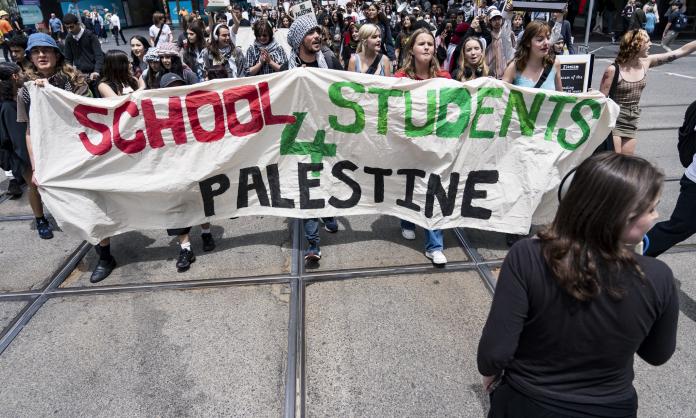Climate activists and many others are preparing for a major civil disobedience action at the International Mining and Resources Conference, to be held in Melbourne in late October. In the run-up to IMARC, here’s a short history of some of the highest profile anti-corporate blockades in recent Australian history.
—————
Civil disobedience works because the rich and the powerful rely on their “business as usual” running smoothly. They like to do their deals out of sight and out of mind. They rely on the vast majority of us feeling powerless to stop them. Civil disobedience occurs when masses of people take direct action to shut down some part of the system. Mass civil disobedience can create a powerful rupture – in political and practical terms – in the business as usual of the elite.
The Franklin blockade, 1982-83. In the early 1980s, thousands of activists blockaded the site of a proposed dam on the Franklin River in Tasmania. More than 1,000 were arrested, and 500 were jailed for breaching bail conditions. The campaign to save the Franklin had a lot going for it: there were large rallies in major cities, No Dams “write in” campaigns in elections showed mass support, and even some of Australia’s business elite opposed the dam on financial grounds. Still, thousands of activists putting their bodies on the line was a crucial part of the campaign’s eventual success.
Maritime Union of Australia picket, 1998. A blockade – in the form of a picket line – is one of the oldest and most effective forms of working class action. In April 1998, pickets formed at ports around Australia after 1,400 waterfront workers were sacked in a vicious anti-union attack. In Melbourne, a mass picket on the night of 17 April was confronted by thousands of police preparing to break the picket line.
A stand-off lasted until after dawn, when 2,000 construction workers from city building sites marched to the docks, surrounding the police, who had to negotiate to be let out between the two groups of workers. The union survived, the union busting defeated – despite unnecessary concessions at the negotiating table after the dispute.
Jabiluka blockades, North Limited (Melbourne), 1998 and 1999. North Limited was developing the Jabiluka uranium mine, on the land of the Mirrar Aboriginal people in the Northern Territory. Mirrar people and protesters “trespassed” on the mine site – senior traditional owner Yvonne Margarula being arrested for “trespass” on her own land.
A solidarity campaign of protests and blockades developed in Melbourne, where North Limited was based. Every time hundreds of protesters blockaded North’s headquarters in St Kilda Road, the company’s share price fell. The company was eventually bought out, and the mine was never developed. The Mirrar people are still demanding that the Jabiluka mine site be returned to them by Rio Tinto, which acquired North and its assets.
S11 protest, 2000. In 1999, mass protests disrupted the World Trade Organisation meeting in Seattle. A global justice movement inspired by these protests swept the globe in the years that followed. On 11 September 2000, thousands of people blockaded Crown Casino in Melbourne to stop a meeting of the world’s business and political elite, the World Economic Forum. The blockade was so effective that only a trickle of WEF delegates made it into the conference on the first day: protesters were more powerful than the wealthiest people on the planet.
Occupy Melbourne, 2011. In October 2011, thousands of people were part of Occupy Melbourne – part of a worldwide wave of mass protest against austerity that shook the global elite. After a week, Melbourne’s mayor called in the police to remove the protesters: thousands of people engaged in non-violent resistance, shutting down large parts of the city for the day.
Blockade IMARC, 2019. In October 2019, Blockade IMARC aims to continue this tradition of anti-corporate blockades. We’re part of a global movement for climate justice, for Indigenous rights, for workers’ rights and for a sustainable environment. We will use mass civil disobedience to blockade the conference. We aim to disrupt this gathering of climate criminals and, if we can, to shut it down.










